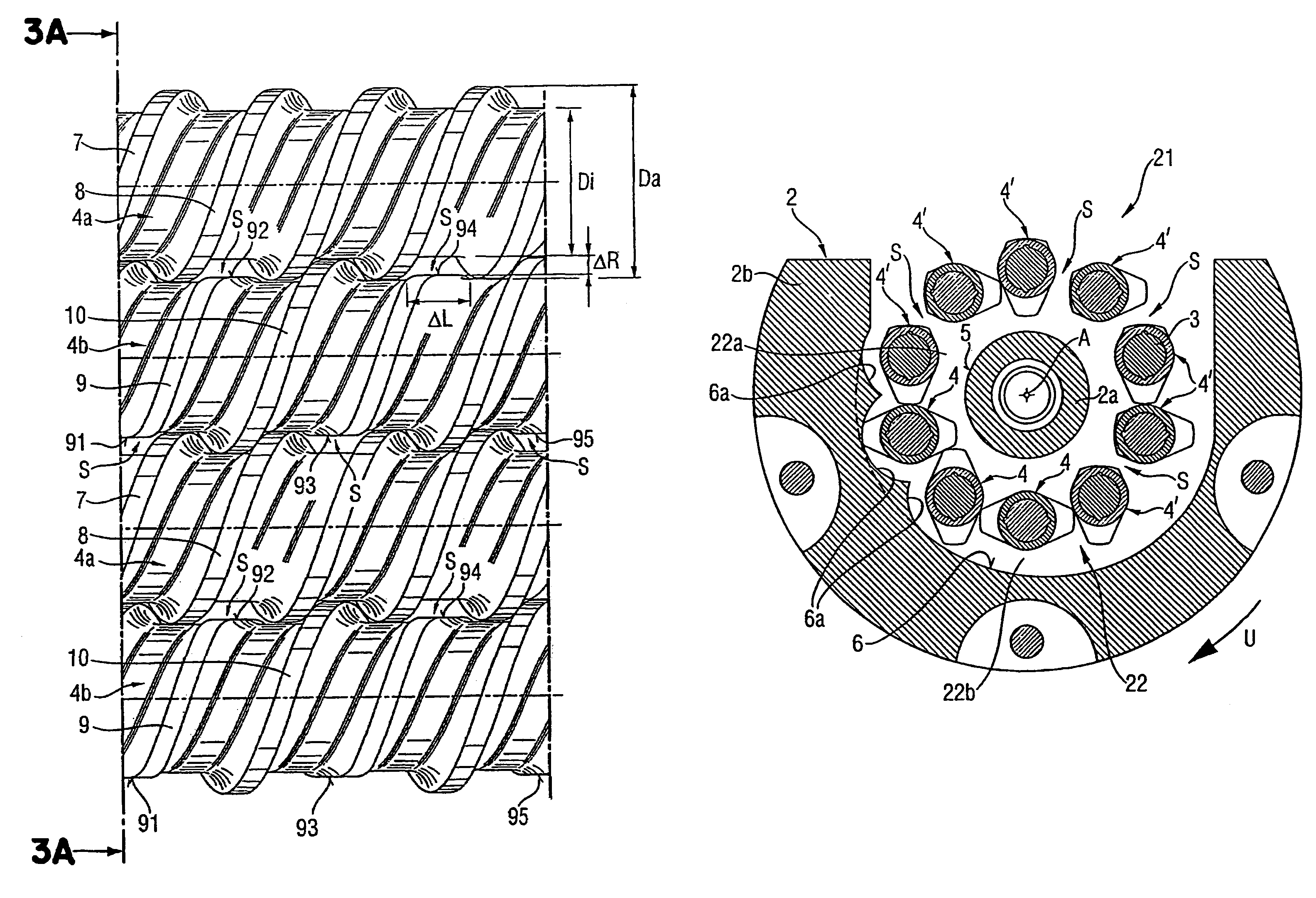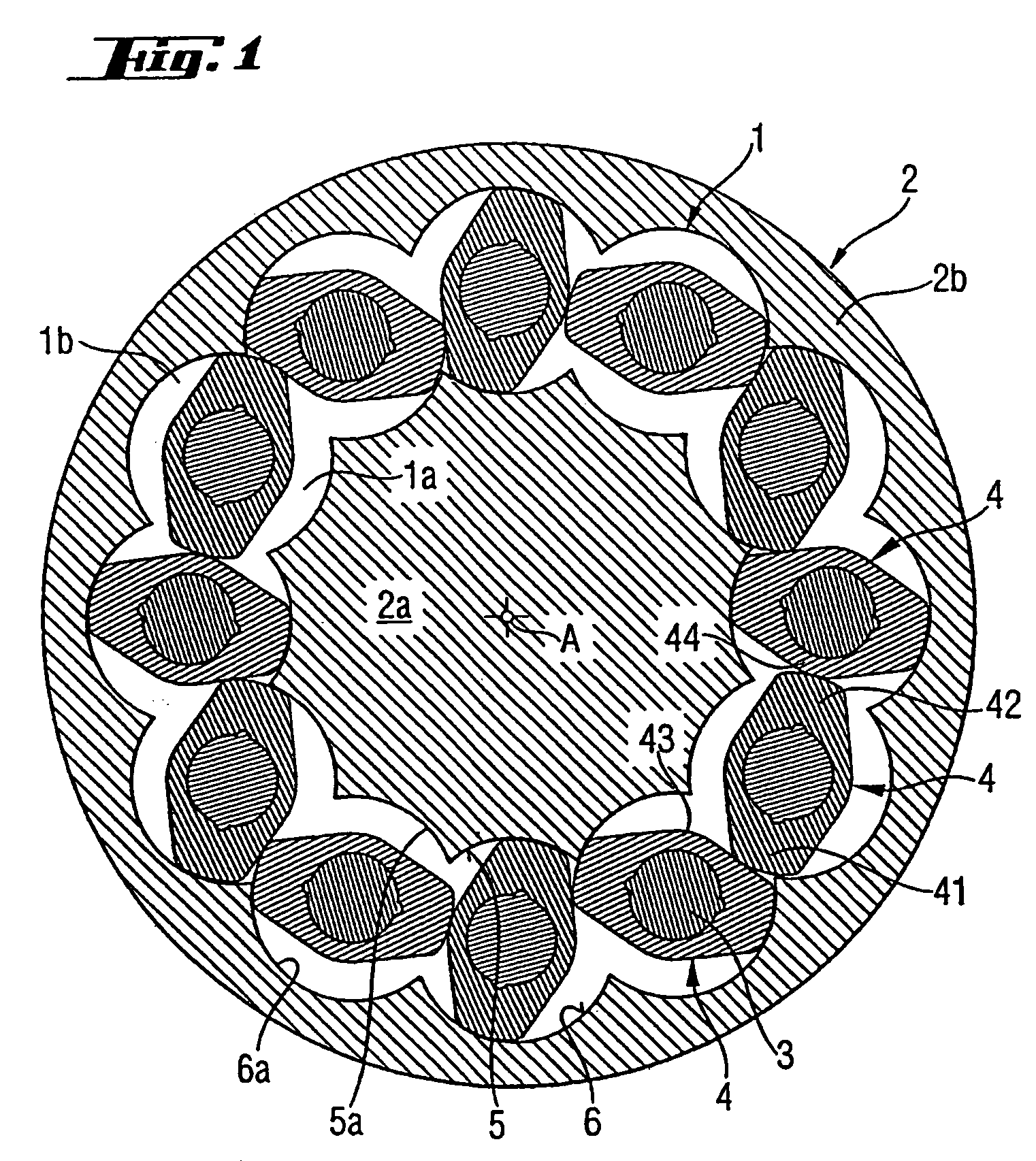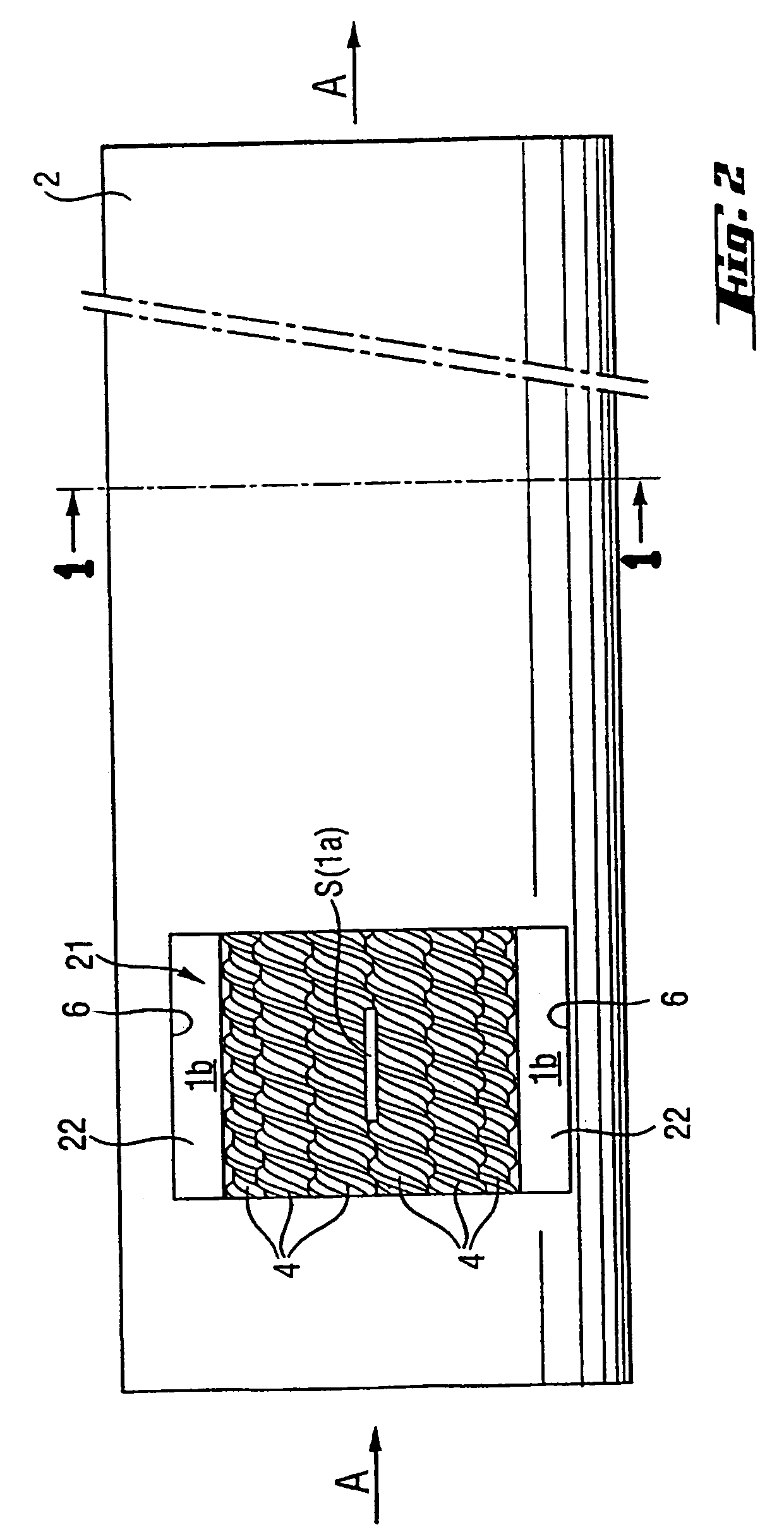Multi-screw extruder
a multi-screw, extruder technology, applied in the direction of mixing/kneading, manufacturing tools, food shaping, etc., can solve the problems of reducing the overall retention time of the product in such a process, reducing the investment cost of such an extruder, etc., to facilitate the conveying effect improve the conveying capacity of the screw elements, and increase the holding capacity of the ring extruder
- Summary
- Abstract
- Description
- Claims
- Application Information
AI Technical Summary
Benefits of technology
Problems solved by technology
Method used
Image
Examples
Embodiment Construction
[0029]FIG. 1 is a partial section through a 12-screw ring extruder perpendicular to axial direction A along a sectional plane 1—1 (see FIG. 2). This sectional view describes both the section through a ring extruder according to prior art as well as through a ring extruder according to this invention. The extruder casing 2 consists of a core 2a and outer casing 2b. Extending between the core 2a and outer casing 2b is a rim-like hollow space 1, which is divided into an inner process space 1a and an outer process space 1b by screws 3 arranged in a rim in this hollow space 1, which each carry a processing element or conveying element 4. The processing elements 4 shown here are double-threaded conveying elements each with a first flight 41 and a second flight 42. The screw profile (along axial direction A) is preferably designed in such a way that adjacent conveying elements 4 always contact each other, so that the first web 41 and second web 42 of a conveying element 4 is in contact wit...
PUM
| Property | Measurement | Unit |
|---|---|---|
| outer diameter Da | aaaaa | aaaaa |
| outer diameter Da | aaaaa | aaaaa |
| outer diameter Da | aaaaa | aaaaa |
Abstract
Description
Claims
Application Information
 Login to View More
Login to View More - R&D
- Intellectual Property
- Life Sciences
- Materials
- Tech Scout
- Unparalleled Data Quality
- Higher Quality Content
- 60% Fewer Hallucinations
Browse by: Latest US Patents, China's latest patents, Technical Efficacy Thesaurus, Application Domain, Technology Topic, Popular Technical Reports.
© 2025 PatSnap. All rights reserved.Legal|Privacy policy|Modern Slavery Act Transparency Statement|Sitemap|About US| Contact US: help@patsnap.com



